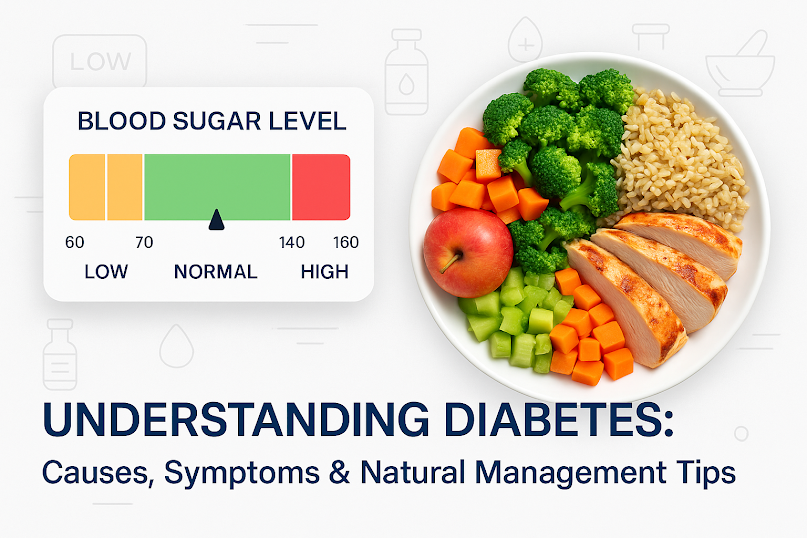What is diabetes?
Diabetes mellitus, or just diabetes, is a long-term medical illness that alters how your body uses food as fuel. Your body releases glucose, or sugar, into your bloodstream after breaking down carbs after meals. Diabetes results from excessive blood sugar levels caused by improperly functioning insulin, a hormone produced by the pancreas.
Types of Diabetes
👉When you have an autoimmune disease, your immune system targets the cells that make insulin.
👉It is typically diagnosed in young people or children.
👉insulin medication for the rest of one's life.
Type 2 Diabetes
👉Caused by insulin resistance — your body doesn't use insulin properly.
👉Most common type; often linked to obesity and lifestyle.
👉Can be managed or even reversed with diet and exercise
3. Gestational Diabetes.
happens to some pregnant ladies.
usually goes away after giving birth, but it raises the chance of Type 2 later.
🙅Common Symptoms of Diabetes
Urinating a lot, especially at night
Severe hunger and thirst
Unexpected weight reduction
Vision blur
Weariness
Slow healing of wounds
tingling or numbness in the hands and feet
Why Diabetes is a Global Concern
The World Health Organization (WHO) claims that:
Worldwide, more than 537 million adults have diabetes.
Ninety to 95 percent of cases of diabetes are type 2.
It is a major contributor to blindness, heart attacks, strokes, and kidney failure.
Risk Factors for Type 2 Diabetes
Sedentary lifestyle
Poor diet (high in sugar, fat, and processed food)
Family history of diabetes
Obesity or being overweight
High blood pressure or cholesterol
Stress and lack of sleep
How to Prevent or Manage Diabetes Naturally
1. Eat a Diabetes-Friendly Diet
Include whole grains, fruits (low glycemic), vegetables, legumes, and lean proteins.
Avoid sugary drinks, white bread, fried food, and processed snacks.
Use natural sweeteners like stevia in moderation.
2. Stay Active
Every day, try to get in 30 minutes of exercise, whether it be swimming, cycling, yoga, or walking.
aids in improving insulin sensitivity and lowering blood sugar.
3. Track Your Blood Sugar Levels
Check your post-meal and fasting blood sugar levels frequently.
Maintain a diabetic journal to monitor your development.
4. Manage Stress
Practice deep breathing, meditation, or journaling to reduce cortisol levels, which can spike sugar.
5. Get Enough Sleep
Aim for 7–8 hours of restful sleep to keep blood sugar balanced.
Natural Support and At-Home Treatments
Drink water in the morning after soaking fenugreek seeds (methi) overnight.
Blood sugar can be lowered by drinking bitter gourd (karela) juice.
Add a pinch of cinnamon to your cereal or tea.
Indian gooseberry, or amla, helps reduce insulin resistance.
👉 If you are on medicine, always get a doctor's approval before utilizing herbal remedies.
Unaccounted-for weight loss
Persistent exhaustion and thirst
recurring infections
Visual problems
Serious side effects including kidney failure or nerve damage can be avoided with early diagnosis and treatment.
Awareness and discipline are crucial, and it begins with just one tiny action today.

Comments
Post a Comment